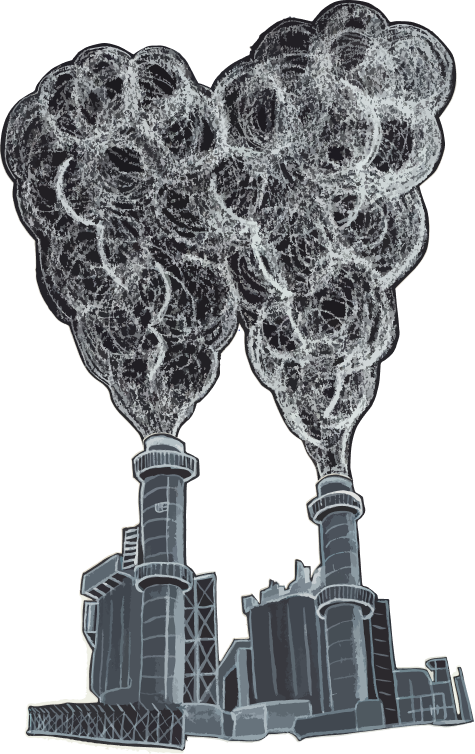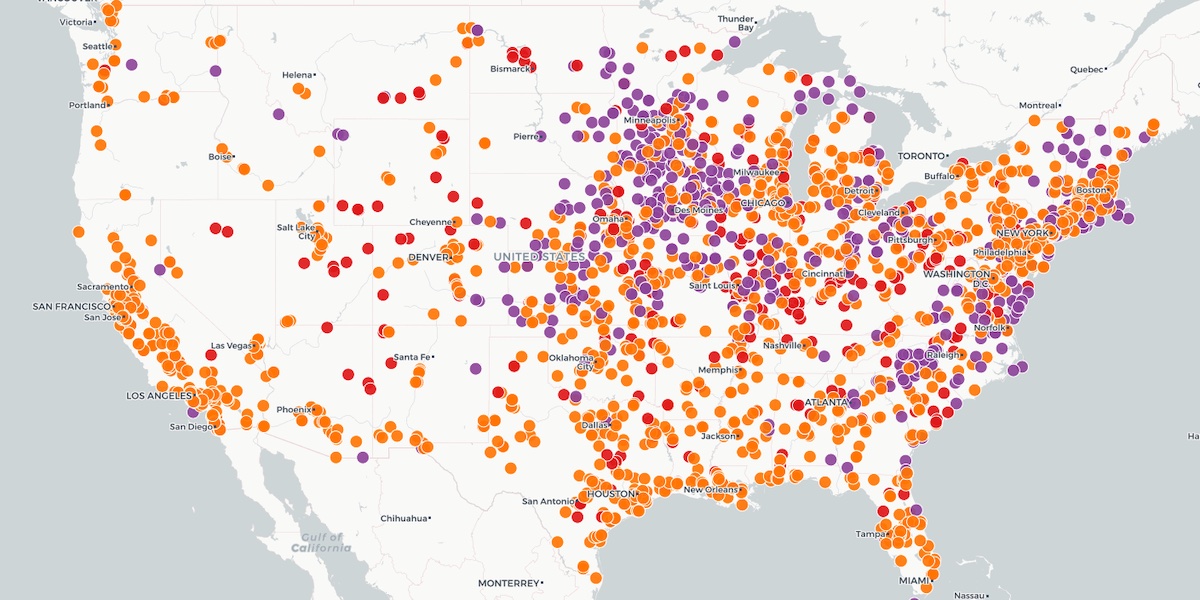Illinois
Back to mapTo get to zero by 2050, Illinois must cut climate pollution by
9.5 million metric tons of CO2 equivalent a year.
Emissions in Illinois
Million metric tons of carbon dioxide equivalent (MMTCO2e) emissions
Note: Grey area indicates missing data due to processing delays.
Source: WRI, Mar 2021
This is how we're going to do it.
Source: WRI, Mar 2021
- Boilers and furnaces with heat pumps
- Gas stoves with induction ranges
- No-till farming to keep CO2 in the soil
- Capturing methane leaks from landfills
- Capturing CO2 to make emissions-free concrete
- Burning green hydrogen to make emissions-free steel
- Plugging methane leaks from gas pipelines
Decarbonize Our Buildings
15% of Illinois's climate pollution comes from buildings.
We burn fossil fuels to heat our air, water, and food.
To cut this pollution...
Let's electrify our heat!
We'll replace...
...in all of Illinois's 5.2 million buildings.
In fact, 20% of buildings in Illinois are already fossil fuel free!
That means we only need to electrify the remaining 4.2 million dirty buildings in Illinois. That's around 150,000 per year.
Source: Microsoft, Mar 2021; NREL, Dec 2021Electrifying all buildings cuts 15% of the pollution.
Decarbonize Our Transport
26% of Illinois's pollution comes from cars, trucks, trains, and planes.
But mostly from cars.
To cut this pollution,
your next car must be electric.
Or consider going car-free with public transit, bikes/e-bikes, car share, or other alternatives!
There are 4.2 million vehicles in Illinois and 26,000 are already electric (0.6% of the total).
We need to electrify (or replace) the remaining 4.1 million gas-powered vehicles. That's around 149,000 a year.
Source: DOT, Feb 2021Electrifying all transportation cuts 26% of the pollution.
Decarbonize Our Power
24% of Illinois's pollution comes from burning coal, gas, and oil to make power.

To cut this pollution...
Put solar panels on your roof!
Then, we'll replace all fossil fuel power plants with solar and wind farms.

...and find good jobs for those workers.
Current Fossil Fuel Power Plants in Illinois
19 coal plants
Baldwin Energy Complex
Randolph County
1,894 MW
Powerton
Tazewell County
1,786 MW
Prairie State Generating Station
St Clair County
1,766 MW
Kincaid Generating Station
Christian County
1,319 MW
65 gas plants
Elwood Energy Facility
Will County
1,728 MW
Joliet 29
Will County
1,320 MW
Kendall Energy Facility
Kendall County
1,256 MW
Venice
Madison County
1,098 MW
25 oil plants
Fisk
Cook County
663 MW
Pearl Station
Pike County
46 MW
Rantoul
Champaign County
30 MW
Factory Gas Turbine
Sangamon County
27 MW
But wait!
It's not enough to replace our power plants with wind and solar farms.
To power our electric cars and buildings, we need two times the electricity we have today.
In all, we'll need to build 12,000 Megawatts of wind power and 11,000 Megawatts of solar power.
Since Illinois already has 2,000 Megawatts of wind and 165 Megawatts of solar, that's 11,000 Megawatts of wind power we need to build and 11,000 Megawatts of solar power. That's around 369 Megawatts of wind power and 392 Megawatts of solar power a year.
Source: EIA, Apr 2022Decarbonizing all dirty power cuts 24% of the pollution.
And gives us zero-emissions power we need to eliminate pollution from buildings and cars!
Other Emissions
The last 34% of Illinois's climate pollution comes from other sources...
This includes farming, landfills, industry, and leaks from gas pipelines.
There's no one solution to solve these problems, but there are lots of great ideas:
Ready to do your part?
Learn how to electrify your own machines and pass local policy to electrify the rest
Take Action